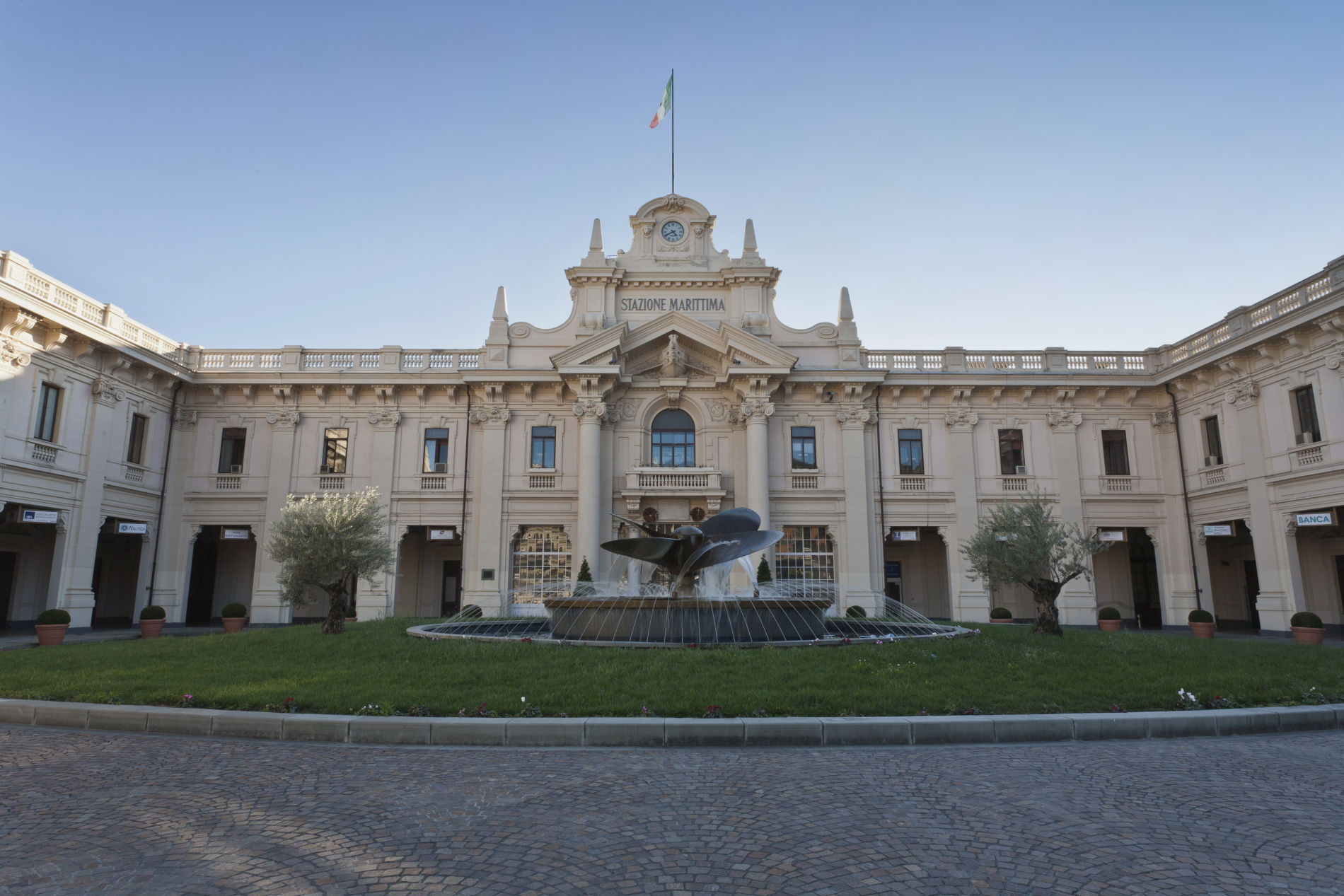
CITY TRIPS
The magnificent Palazzo San Giorgio (1), today the seat of the Port Authority,
overlooks the Historical Port.
The ancient edifice is a fine example of civic public architecture:
the original part, built by Frate Oliverio for the People’s Captain Guglielmo Boccanegra,
dates from 1260 and, in the 15th century, was assigned to the Bank of San Giorgio,
official organ of the Government’s national debt and major political-financial power,
initially of the Medieval City-State and subsequently of the Republic.
Toward Piazza Banchi (2), not far beyond Sottoripa - the “Ripa Maris”,
Italy’s most ancient portico which today accommodates typical Genoese shops -
stands the 16th-century Loggia dei Mercanti (Merchants’ Loggia) and, opposite,
the distinctive facade of the Church of San Pietro in Banchi.
The route, strewn with niches and shrines, ornamental panels over doorways and marble reliefs,
is lined with historic shops and bars, inviting places in which to stop. Just beyond, via Orefici (3),
Piazza Soziglia and Piazza Campetto, renovated in the 16th century, represent one of the oldest areas in the city.
Buildings worthy of note are the 14th - century Palazzo Casareto de Mari, and the 17th -
century Imperial Palace (Palazzo Imperiale), with spectacular grotesque decorations.
Nearby, the beautiful medieval “nobleman’s quarter” of the Doria family, located by the elegant Church
and Cloister of San Matteo, should be meticulously visited.
Continuing up along the cobbled streets, you reach the majestic Piazza De Ferrari, the heart of Genoa.
In this square stands the grandiose Palazzo Ducale (4), ancient residence of the Doges built in 1339,
mostly on medieval remains.
Expanded and transformed during the second half of the 1500s, following its recent restoration,
it ranks today as Italy’s largest polyvalent arts centre, featuring areas dedicated to exhibitions,
cultural events and business activities.
All this only a few metres from the prestigious state - of - the - art Carlo Felice Opera House,
which was rebuilt in 1991.
Piazza De Ferrari leads into the central Via XX Settembre which, with its side streets
and Corso Buenos Aires, is the city’s shopping area for excellence with fashionable stores
to cater for all tastes, and with an assortment of bars and restaurants.
Further ahead, the medieval Towers of Porta Soprana (5) rise above the original house
of Christopher Columbus and the ancient Cloister of Sant’Andrea.
The imposing circle of medieval walls, dating from the 12th century, lead into the graceful Piazza Sarzano (6)
where the Museum of Sant’Agostino (7) houses a thousand years of sculpture in a beautifully
restored ancient convent.
Returning to Piazza De Ferrari, why not walk along the elegant 19th-century Via Roma (8),
lined with sophisticated boutiques which sell exclusive Italian designer labels, just like
the adjoining Galleria Mazzini (9). This arcade leads to the handsome Piazza Corvetto (10),
set between two parks: Villetta di Negro, which contains the splendours
of the Edoardo Chiossone Museum of Oriental Art (11), and the Acquasola Garden.
A short walk and your eyes behold the large graceful square of Piazza Fontane Marose,
surrounded by distiguished edifices such as Palazzo Pallavicini, Ballestrino, Spinola dei Marmi (12),
Cambiaso and Gambaro. Running off the Piazza, the renowned “Via Aurea” (13) (Golden Road) -
Via Garibaldi - is lined with magnificent palaces and museums, in addition to the art galleries
located in Palazzo Rosso (11) - aristocratic residence of the Brignole Sale family - and Palazzo Bianco (14),
home to an art collection which spans from the 15th to the 18th century.
Nearby, Palazzo Grimaldi Spinola (15), the National Gallery, former residence
of important Genoese families such as the Grimaldi and the Spinola, and the Risorgimento Museum (9),
formerly the birthplace of Giuseppe Mazzini, are open to the public.
Via Cairoli leads into Largo della Zecca (16) and the 17th-century Via Balbi (17)
with the magnificent Palazzo Reale (18) (Royal Palace), formerly known as Palazzo Balbi Durazzo Pallavicini
and today seat of the National Museum.
And here you are once again in the vicinity of the Cruise Terminal.
Before returning to the terminal, take the opportunity to visit the exceptionally beautiful Commenda di Prè
which gave hospitality to pilgrims departing for the Holy Land.
The palace of Prince Doria Pamphili, former court of the Republic of Genoa,
faces the “Ponte dei Mille” Cruise Terminal.